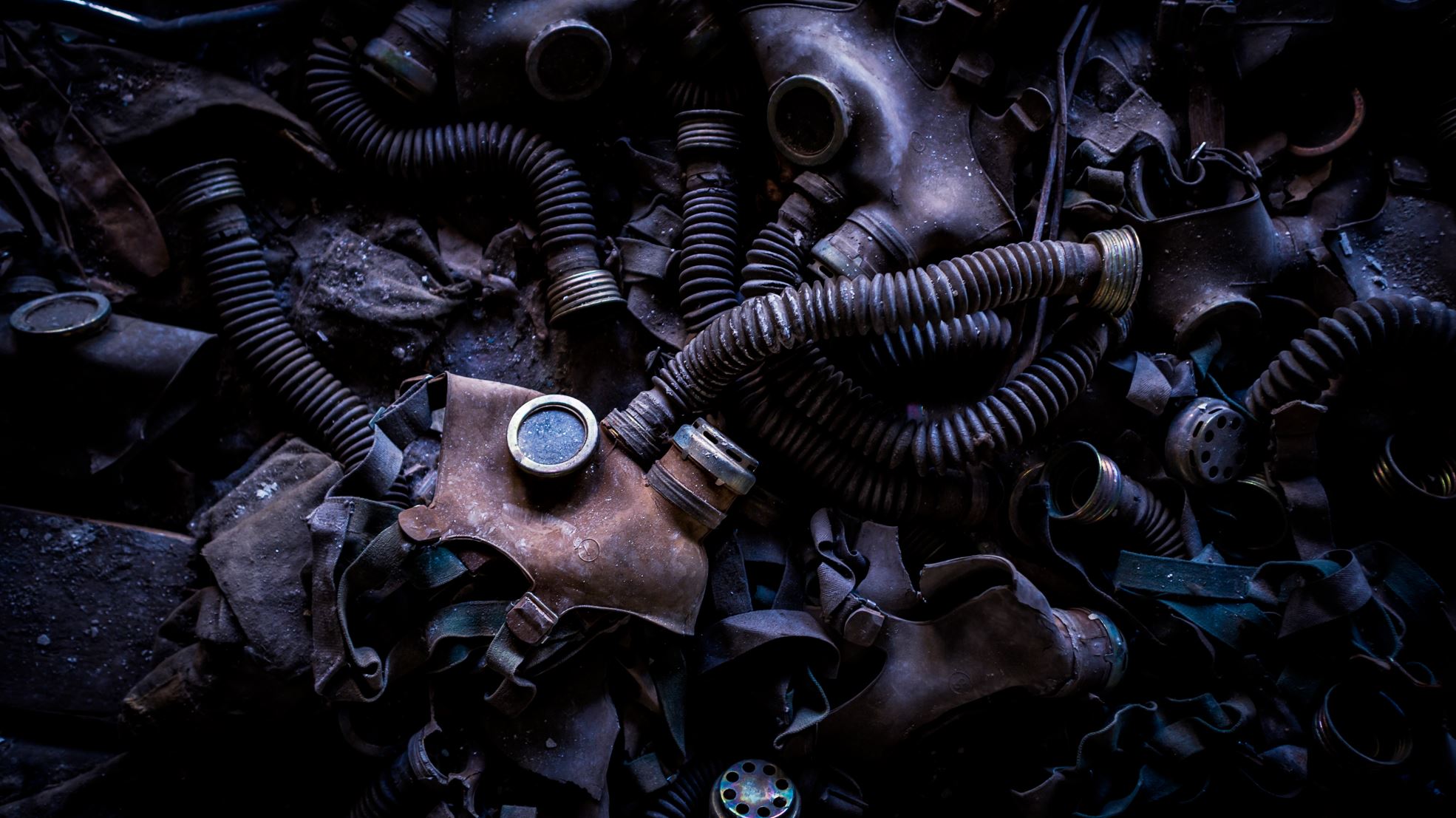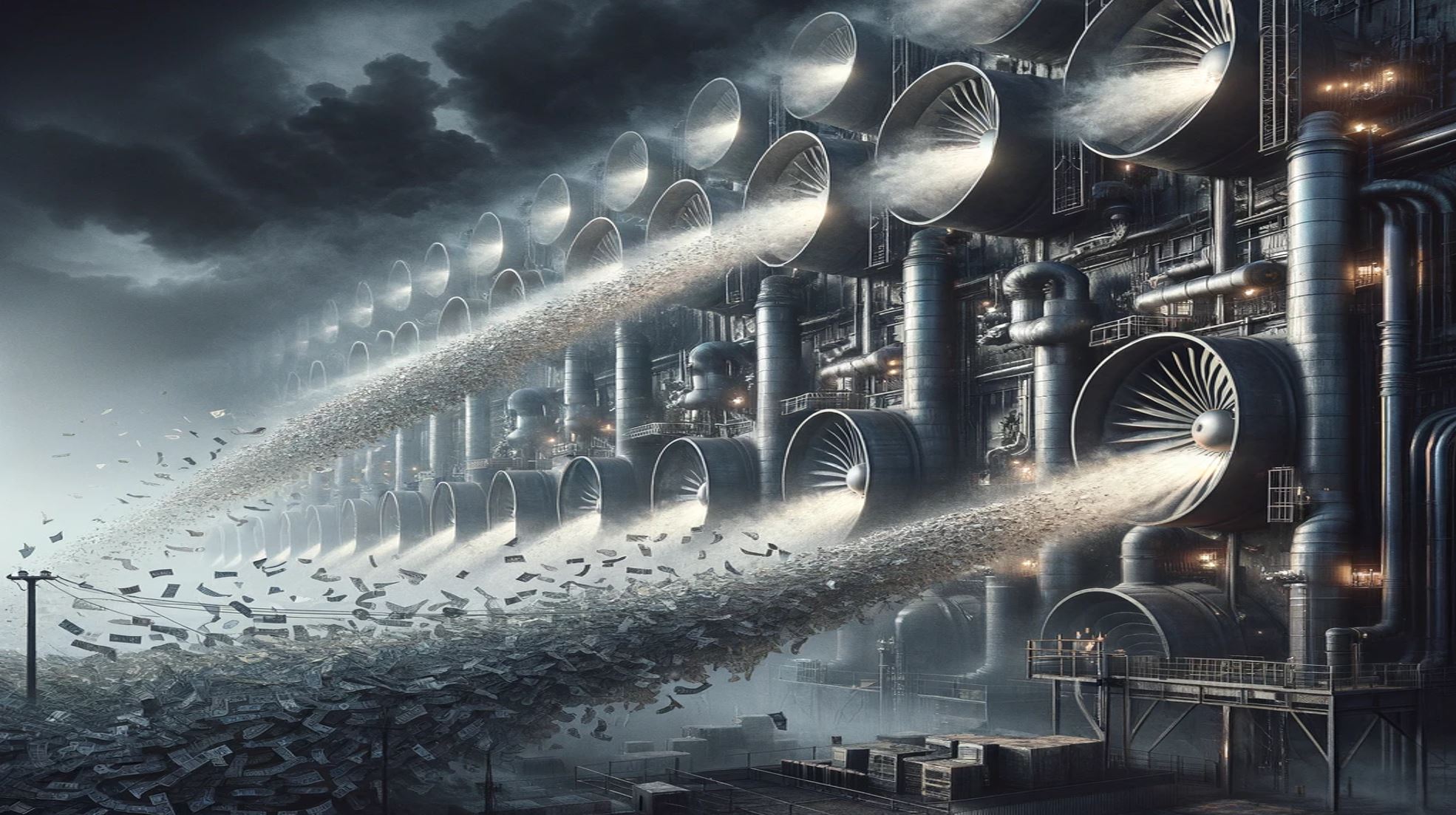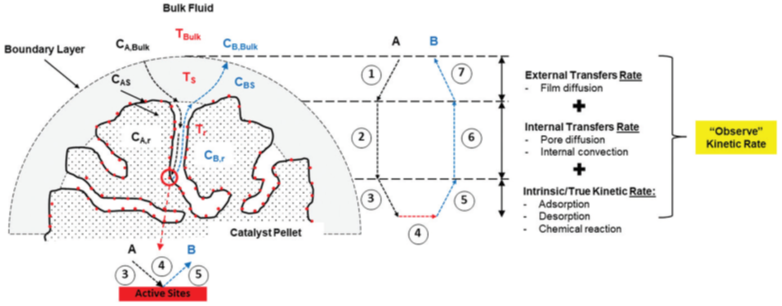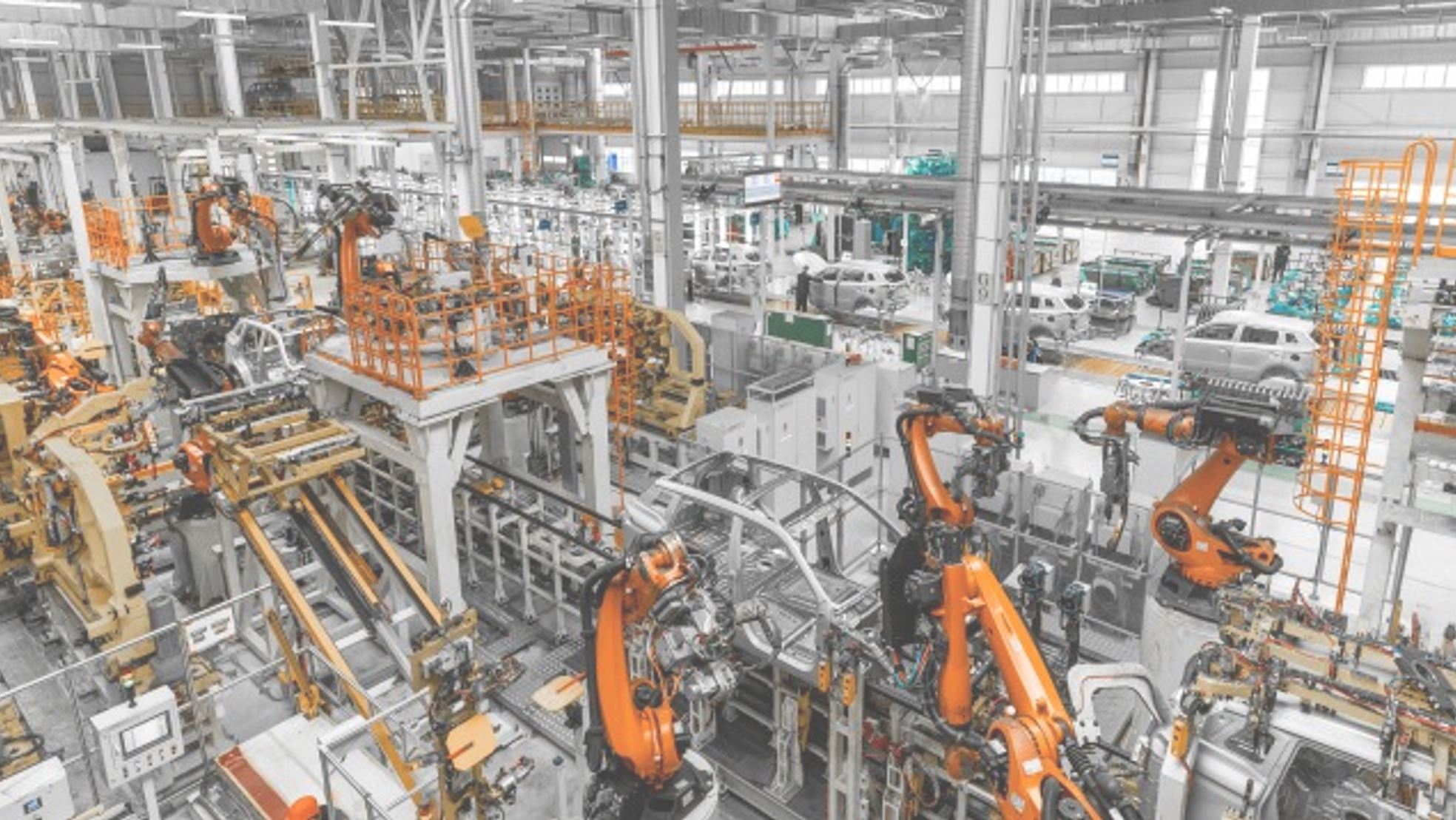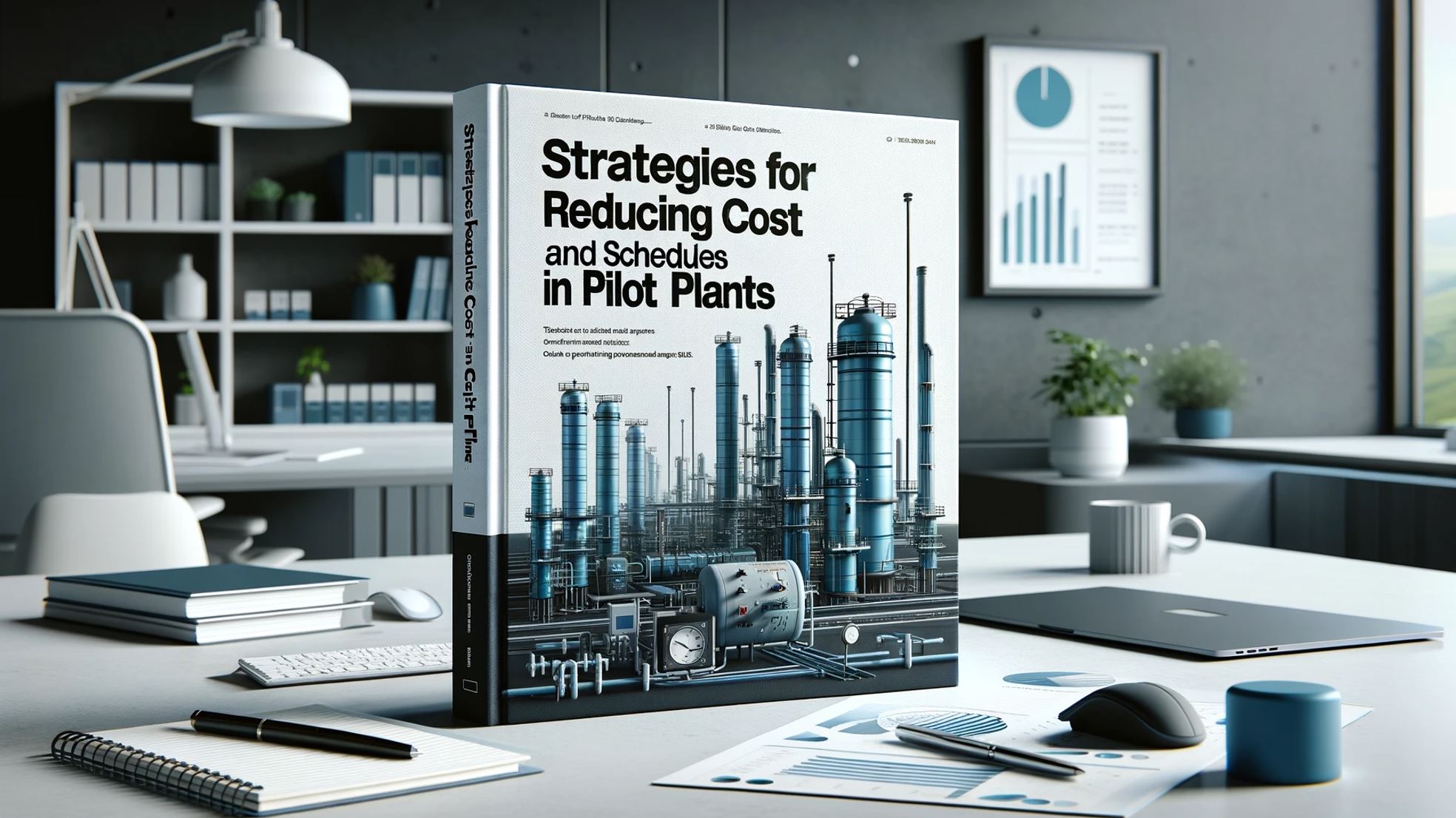

The journey from a laboratory experiment to a commercially viable process is challenging step in the development of new technologies and products. This transition, commonly known as process scale-up, is a critical phase where theoretical research and small-scale experiments are transformed into practical, large-scale applications. The journey from a beaker to commercial production, is not just about bigger quantities; it’s about smarter, safer, and more efficient methodologies.
The transition from conducting experiments in small laboratory beakers to managing processes in larger sizes is not merely a matter of scaling up quantities; it contains a many factors often behave unexpectedly (effect of uncertainties) when scaled up. These key differences provide insights into the practical and theoretical considerations that are essential for a successful scale-up.
1. Difference in “Objective & Scale-up Challenges”
At the “lab scale”, the stage is about small-scale experiments that help to develop hypotheses and preliminary process designs using 1st lab result.
Moving to the “pilot scale”, the focus shifts to undertand the process and verifying that the lab scale findings and unknown parameters or effect of uncertainties can be translated into a larger scale operation of critical equipment or units. The good pilot plant could mimic “critical phenomena” of commercial-scale production. A pilot plant is a “scaled-down version” of a larger facility, designed to test the performance and characteristics of a process before implementing it on a full-scale industrial level.
The “Demonstration plant” stage has the objective of proving operational feasibility over extended periods and producing enough product for market testing and regulatory purposes. It also serves to refine the economic assessments, providing a near-commercial environment to test the viability (commercial feasibility and the technical reliability) of full-scale production. A demonstration plant, which is larger than a pilot plant, serves as a system to validate the functionality of an industrial production plant before constructing a full-scale commercial facility. It represents the concluding phase in the research, development, and demonstration of a “New process” or technology intended for use in the plant. the benefit of demonstration plant as example:
Finally, at the “commercial plant” stage, the objectives are fully centered on producing the product at a scale that is economically viable, ensuring the quality and consistency of the product meets market and regulatory standards, optimizing the process for maximum efficiency and productivity, and establishing a reliable supply for the market. At this point, the process has been de-risked, and the focus is on profitability, customer satisfaction, and often, on continuous improvement for maintaining competitiveness in the market.
2. Difference in “Production Volume”
At the “lab scale”, processes are conducted on a very small scale, typically ranging from a few milliliters to several liters. The “pilot scale” increases the volume to a few liters up to several cubic meters, serving as a bridge to test the process’s scalability and to identify potential issues that might not have been evident at the lab scale. The scale-up ratio from lab scale to pilot scale can be quite substantial, often between 100:1 to 1000:1.
Further scaling up to the “demonstration scale” involves a smaller increase, with typical ratios from 10:1 to 50:1 compared to pilot scale. Demonstration-scale operations are conducted in volumes that range from tens to hundreds of cubic meters, aiming to mimic commercial operations and generate data for the final commercial design. Finally, at the commercial scale, the volume is maximized at economy of scale.
Although the scale-up ratios are indicative and can vary widely, it could be defined as Golden Rule: Optimum scale-up ratio, meaning the minimum pilot plant size that can still represent key controlling phenomena inside commercial size (pilot plant as scale-down from commercial plant). For some guidlines are shown below
3. Difference in “Infrastructure”
The infrastructure requirements for lab, pilot, demonstration, and commercial plants differ greatly due to their varying scales and objectives.
“Lab scale operations” require basic laboratory equipment such as reactors, analytical instruments, hoods for handling hazardous materials, and benchtop instruments for measuring and controlling process variables. Safety measures are essential but are on a smaller scale compared to larger plants.
“Pilot plants” are a step up in terms of infrastructure. They typically include scaled-down versions of commercial equipment, which might include small reactors and separation systems. The infrastructure here is more robust, with a focus on simulating real production conditions for critical equipment/units while still allowing for small adjustments. Safety and control systems are more advanced, often apply some standards of a full-scale plant.
“Demonstration plants” require larger and more integrated systems that are closer to commercial-scale operations. They include large reactors, separation units, and materials handling systems capable of processing larger volumes of material. Infrastructure at this scale includes comprehensive automation as well as more extensive safety and environmental controls. These plants may also require infrastructure for handling byproducts and waste streams.
The infrastructure of a “commercial plant” is designed for full-scale production. This includes large-scale reactors, storage tanks, pipelines, control rooms, and utility systems (such as steam, cooling water, and waste treatment plants) designed for continuous operation. The equipment is industrial-grade, with a focus on durability and reliability. Commercial plants require extensive safety systems, including emergency shutdown systems, fire protection, and effluent treatment plants. The infrastructure is often designed to comply with various regulatory standards and to ensure a consistent supply of product to the market.
4. Difference in “Control System”
At the “lab scale”, control systems are often simple and may be manual or semi-automated. They are designed for flexibility and ease of modification, as experiments often require changes in process conditions.
“Pilot plants” step up in complexity with more sophisticated control systems. These are usually automated to a greater extent and are designed to capture more detailed process data.
Control systems in “demonstration plants” are near-commercial in scale and complexity. The focus at this stage is on ensuring that the process can be controlled effectively at a larger scale, and thus, the systems are designed to handle the increased complexity and integration of a larger plan.
At the “commercial scale”, control systems are fully automated and are often part of an integrated plant-wide control architecture. The control systems are essential for ensuring consistent product quality, maximizing throughput, and minimizing waste and energy use. They are also critical for complying with regulatory requirements and for the plant’s overall operational efficiency.
5. Difference in “Data Collection”
At the “lab scale”, data collection is often manual or uses basic data logging from benchtop instruments. The data is typically used for developing models, understanding reaction mechanisms, and initial process design. The volume of data is usually manageable and often analyzed manually or with simple software tools.
When processes are scaled to “pilot plants”, the data collection becomes more systematic and automated. The aim is to collect data that will inform the design of larger-scale operations and to begin to understand the implications of scaling up.
At the “demonstration scale”, the data encompasses a broad spectrum, from raw material characteristics to environmental emissions. Data collected at this scale is critical for validating process and for regulatory submissions.
In “commercial operations”, data collection is integral to the day-to-day management of the plant. The focus is on operational data that is critical for product quality, process efficiency, regulatory compliance, and business decisions.
6. Difference in “Materials”
The materials used in lab, pilot, demonstration, and commercial plants vary significantly due to differing objectives, scales, and requirements at each stage
At the “lab scale”, the focus is on using pure, well-characterized materials to develop a clear understanding of the process under study. Specialty chemicals and advanced materials might be used at this stage to explore new reactions or product formulations.
Moving to the “pilot scale”, the materials used begin to resemble those that would be used in a commercial setting but are still procured in smaller, more controlled batches, The purity and consistency of materials remain important, but there is also an increased focus on sourcing materials that are more cost-effective and representative of what will be used at a larger scale.
At the “demonstration scale”, materials must be more closely aligned with commercial requirements. This includes using materials that are available on a commercial scale, with an emphasis on supply chain reliability and cost.
In “commercial plants”, materials are sourced based on commercial availability, cost, and suitability for large-scale production. Consistent supply and cost-effectiveness are crucial at this stage, as material costs can significantly impact the overall profitability of the operation. The materials must meet the specifications that ensure product quality but are also chosen to optimize the economics of the production process.
7. Difference in “Staffing”
“Lab scale” operations typically involve who specialize in research and development. These individuals are highly skilled in experimental techniques, data analysis, and small-scale process development. The team size is usually small, with a focus on innovation and experimental work. Staff at this stage often have advanced degrees in chemistry, biochemistry, chemical engineering, or related fields.
At the “pilot scale”, the team size grows, and the skill set becomes more diverse, encompassing both research and process operation expertise. Personnel at this stage begin to deal with issues of scale-up, process control, and troubleshooting in a more industrial setting.
At the “demonstration scale”, the team size further increases, and the focus shifts towards operating the process for near-commercial production. Staff at this stage need to have a good understanding of industrial-scale processes, including aspects like material handling, quality control, and regulatory compliance.
In “commercial plants”, the staffing needs are the most extensive and varied. This includes a broad range of roles such as production operators, maintenance technicians, quality assurance personnel, logistics coordinators, safety managers, and administrative support, in addition to engineers and scientists for ongoing process improvement and troubleshooting.
8. Difference in “Safety Protocols”
At the “lab scale”, safety protocols are primarily focused on handling small quantities of chemicals and materials, often in a controlled laboratory environment.
Safety protocols become more comprehensive in the “pilot plant”. In addition to basic PPE, there may be a need for more advanced protective gear, such as respirators or specialized suits, depending on the nature of the materials handled. The risks associated with larger quantities of materials and the operation of scaled-up equipment require more detailed risk assessments, safety training for staff, and the implementation of emergency response procedures.
Safety protocols at the “demonstration scale” are closer to those of a full-scale commercial operation. There is a heightened focus on process safety, including the management of larger volumes of materials and energy. Training for staff becomes more intensive, covering operational safety, emergency response, and hazard recognition.
In “commercial plants”, safety protocols are extensive and deeply integrated into every aspect of the operation. This includes comprehensive PSM systems, regular safety audits, continuous monitoring of process parameters for early hazard detection, and stringent adherence to regulatory safety standards. Emergency response plans at commercial plants are elaborate, often coordinating with external emergency services. Staff training is rigorous, with regular drills and ongoing safety education.
9. Difference in “Waste Management”
At the “lab scale”, waste generation is relatively small. Waste management primarily focuses on the safe disposal of laboratory chemicals, often in small quantities.
The “pilot scale”, the volume of waste generated increases, requiring more structured waste management practices. In addition to safe disposal, there is an increased focus on waste minimization and recycling where feasible. Waste streams may include process byproducts, spent catalysts, solvents, and effluents.
At the “demonstration scale”, waste management practices become more sophisticated, closely resembling commercial-scale operations. This stage often involves dealing with larger volumes of waste, necessitating more comprehensive waste treatment systems, such as effluent treatment plants or incinerators.
In “commercial plants”, waste management is a critical component of operations. The scale of waste generated can be substantial, and there is a strong emphasis on sustainable waste management practices. This includes extensive waste reduction, recycling, and recovery processes, as well as investment in advanced waste treatment technologies.
10. Difference in “Time of Operation”
“Lab scale” operations usually involve short-term experiments. The focus is on controlled, small-scale experiments to test hypotheses or develop processes. The operation time at this scale is highly flexible and can be adjusted to suit the specific needs of the research or development project. It’s common for lab experiments to be run intermittently, with significant time spent on analysis and planning between runs
The goal of “The pilot plants” is to understand how the process behaves over longer periods and under steady-state conditions to gather enough data for process validation and scale-up. Pilot plant operations are often used to simulate commercial operation of critrical units/equipment to some extent but on a smaller scale, and the operating time may vary depending on the specific goals of the pilot study.
“Demonstration plants” usually operate for extended periods, often similar to commercial operation times to demonstrate the process’s stability and viability over longer periods. The operation at this scale is aimed at closely mimicking commercial plant operations, including aspects like shift patterns, maintenance routines, and raw material supply.
“Commercial plants” are typically designed for continuous, long-term operation. The operation time at this scale is driven by market demand, production targets, and economic considerations. The focus is on maximizing productivity and efficiency, which often requires extended and consistent operation times.
11. Difference in “Regulations”
At the “lab scale”, the primary regulatory concerns are usually related to laboratory safety, chemical handling, and waste disposal. Regulations at this stage often include guidelines for safe lab practices, proper storage and handling of chemicals, and environmental regulations pertaining to small-scale waste disposal.
The “pilot level” starts to encounter more stringent regulatory oversight. This can include regulations on emissions, waste management, and worker safety specific to the industry and process type. Pilot plants often need to comply with local environmental and safety regulations, including proper reporting and permits for operating the facility.
“Demonstration plants” are subject to even stricter regulations, similar in many respects to commercial-scale operations. This includes comprehensive environmental regulations, occupational health and safety standards, and potentially industry-specific regulations (such as those in the pharmaceutical or food industries).
In “commercial plants”, the full regulatory requirements must be met. This includes stringent environmental regulations, safety standards, product quality and compliance standards (such as FDA regulations for pharmaceuticals or food safety standards), and labor laws. Commercial operations typically require permits and regular inspections, and they must adhere to national and international standards relevant to their industry.
12. Difference in “Partnership, Investment, & Funding”
“Lab scale” initiatives often involve partnerships with academic institutions, research organizations, and sometimes other companies focused on R&D. These partnerships are typically aimed at fundamental research, developing new technologies, or achieving proof of concept. The funding at this stage is generally limited, reflecting the exploratory and high-risk nature of the work.
At the “pilot scale”, partnerships begin to include technology providers, and potentially early-stage commercial partners. At this stage, funding is used for building pilot facilities, conducting scale-up studies, and initial market assessments. The risk is still high, but there is a greater potential for commercial application.
“Demonstration plants” typically involve more strategic and commercial partnerships, which might include larger industrial players, potential customers, and joint ventures. The purpose is to demonstrate the process on a near-commercial scale and prove its economic viability, reducing the risk for further investment.
“Commercial scale” operations involve a wide range of partnerships, including suppliers, customers, marketing and distribution channels, and potentially other industrial collaborators for technology and business development. The focus is on building a sustainable, profitable business, and the funding is directed towards full-scale production, market expansion, and operational efficiencies.
13. Difference in “Capital Investment”
Capital investment at the “lab scale” is relatively low compared to other stages. It primarily involves funding for laboratory equipment, small-scale experiments, and research personnel. This might include specialized instruments, safety equipment, and materials for experimentation.
The “pilot-scale” capital investment increases significantly. This stage involves constructing a pilot plant, which requires scaled-up equipment, enhanced safety measures, and potentially a dedicated facility.
The “demonstration plant” stage requires a more considerable capital investment. This includes larger equipment, more comprehensive infrastructure, and operational costs for extended runs.
Capital investment at the “commercial scale” is the highest among all stages. It encompasses the cost of building and operating a full-scale production facility. This includes substantial expenses for industrial-grade equipment, large-scale infrastructure, comprehensive safety and environmental systems, workforce, marketing, and distribution.
14. Difference in “Economy of Scale”
At the “lab scale”. costs per unit of product are typically high due to the use of specialized, often expensive materials and labor-intensive processes.
The “pilot scale” allows for the production of larger batches, which can reduce the cost per unit to some extent.
At the “demonstration scale”, the benefits of economies of scale become more apparent. This stage allows for more significant cost reductions per unit of production.
“Commercial plant”, Large-scale operations allow for more efficient use of equipment, labor, and materials. Additionally, purchasing materials in bulk often results in lower per-unit costs. The large volume of production also justifies the investment in automation and advanced process optimization, further driving down costs.
15. Difference in “Reproducibility”
In a “lab setting”, experiments are typically designed to be repeatable under the same conditions. However, lab experiments may not account for all the variables and complexities encountered in larger-scale operations.
The “pilot scale” is critical for identifying and addressing these issues to ensure that the process can be reliably reproduced at even larger scales.
The “demonstration plant”, the goal is to demonstrate that the process can be reliably and consistently replicated, producing the same quality and quantity of output. This stage is crucial for confirming that the process is robust and scalable, and it helps to validate the reproducibility observed at the pilot scale.
In “commercial plants”, reproducibility is greatest importance. The entire operation relies on the ability to consistently produce a product that meets quality standards at the required volume.




